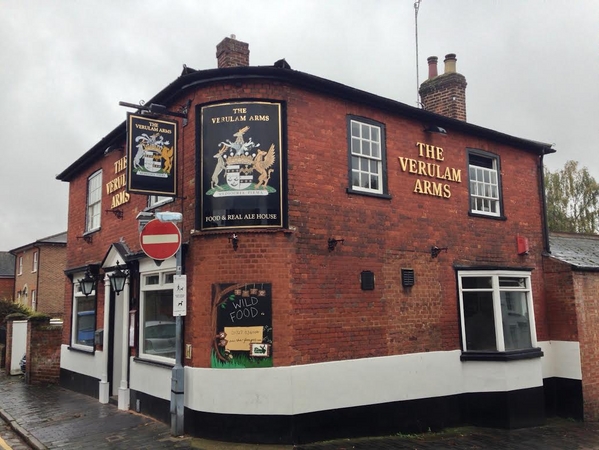Going wild over spiced-up ale
Added: Sunday, February 8th 2015
We’re all medievalists at the moment. We’re commemorating the 800th anniversary of the signing of Magna Carta and we can also raise a glass to toast the event with a beer made in the medieval fashion.
At the Verulam Arms in Lower Dagnall Street, St Albans, Hertfordshire, Richard Osmond brews a beer made with the addition of mugwort and yarrow (pictured below). The pub, now known as Foragers@TheVerulam, has created great interest for its use of herbs and plants plucked wild from the countryside and then used to flavour dishes in the kitchen.
Richard is logically extending this practice to make beer in a similar manner. His first beer, called Gruit, is made on a tiny brewing kit in a shed at the back of the pub. He has been a keen home brewer for several years and the one-barrel plant at the pub was supplied by a home-brewing specialist.
“It’s not a micro, more of a nano brewery,” Richard laughs.
Gruit or gruut is a word of Flemish or Dutch origin and refers to a collection of herbs and spices once used in the brewing process. Until the Reformation, gruit was controlled by the church and brewers had to go, cap in hand, to the local bishop to get their supplies. In Cologne, the archbishop kept strict control through a decree known as the Grutrecht and in Russia Archduke Vassili II banned the use of hops.
A similar situation existed in England. In the 15th century, Flemish weavers, with a taste for hopped beer, settled here and started to grow hops but there was fierce resistance to the plant. Its use was banned in Norwich and the authorities in Shrewsbury forbade “this wicked and pernicious weed”.

Gruit was so entrenched in medieval society that it was even used as currency: the old English coin, the groat, had its roots in gruit.
The situation changed as the power of the church waned. Commercial brewing developed and brewers preferred to use hops for both bitterness that balanced the biscuit character of malt and also for the plant’s preservative qualities.
But gruit has never entirely gone away. Many Belgian wheat beers, of which Hoegaarden is the best known, use orange peel and coriander seeds as flavourings. A brewpub called Gruut in the Belgian city of Ghent produces a range of beers brewed with pepper, ginger, aniseed and even ground peanuts. The brewery is run by a woman, Annick De Splenter, who can properly be called – in the medieval fashion – a brewster.
Magna Carta Ale produced by the Windsor & Eton Brewery, uses yarrow, ground ivy and liquorice, so Richard Osmond is in good company. He studied medieval literature at university and as well as brewing at home has tasted with fascination and approval the dishes at the Verulam that use such wild plants as mugwort and yarrow.
“My beer is a spiritual attempt to communicate with the medieval period,” he says. “It’s paler than beer would have been then as darker malts were used. But I also use 10% Rauch malt from Germany for colour and flavour.”
Rauch or smoked beer is a speciality of the town of Bamberg and is yet a further throwback to medieval times when grain was dried and roasted over beechwood fires.

Richard also uses hops in his Gruit, as some medieval beers he has tasted had a sour note as a result of oxidation: hops keep beer in drinkable condition for longer. In keeping with the principles of Foragers, he uses hops grown in his own garden and he thinks they are from the Kent Goldings variety.
He says the 4.1% beer went down well with drinkers and diners at the pub. “We sold out quickly,” he adds, “and many customers came back asking for more.”
As a result, he plans to stockpile ingredients so he can brew all year round. In the spring he will use sorrel and mint in his beer, with berries and nuts in the autumn.
I found the beer a delight to drink. It has a fine copper colour, a good head of foam and a rich spicy, herbal and smoky aroma and palate. The finish is dry and has an intriguing hint of ginger, even though it’s not used in the beer. Gruit clearly makes a fine companion for rich and spicy dishes in the pub.
Brewing gruit doesn’t have to be confined to the Verulam. As Richard says, “in medieval times, everyone had a tub of beer in the kitchen.” So get brewing: you may well have mugwort, bog myrtle and yarrow growing in gardens, fields or woods near you.
*Foragers@The Verulam Arms, 41 Lower Dagnall Street, St Albans AL3 4QE. Mon-Thur: 12 noon-11pm; Fri/Sat: 12 noon-12am; Sun 12 noon-11pm. www.dinner@the-foragers.com.







